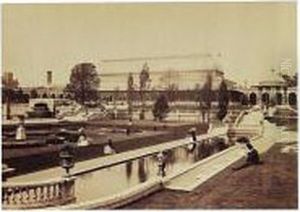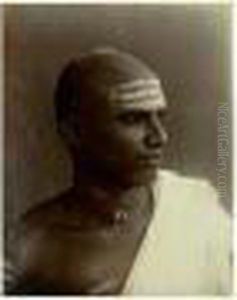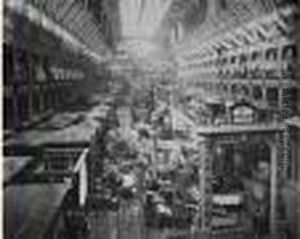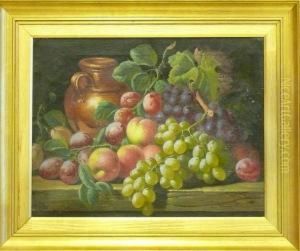Charles Thurston Thompson Paintings
Charles Thurston Thompson was a notable English photographer, born in 1816. He is particularly remembered for his pioneering work in the field of photographic documentation of art, making significant contributions to the early use of photography as a tool for art conservation and study. Thompson's career in photography began in the mid-19th century, a period when the medium was still in its infancy and rapidly evolving. His expertise and innovative approach positioned him as a leading figure in the application of photography to the arts.
Before embarking on his photographic career, there is little recorded about Thompson's early life, reflecting the general obscurity of photographers during this era. However, his impact became evident after he was appointed as the official photographer for the South Kensington Museum, now known as the Victoria and Albert Museum, in London. This position, which he assumed in the 1850s, allowed him to explore and refine his technique in photographing artworks, including sculptures, paintings, and decorative arts. His work at the museum was pioneering, as it involved the meticulous documentation of the museum's extensive collections, serving both as a record and as a means of allowing art to be studied remotely.
Thompson's photographs were celebrated for their clarity and attention to detail, qualities that made them invaluable to art historians and scholars. Moreover, his work contributed to the promotion and dissemination of the museum's collections to a wider audience, at a time when access to such works was limited. His technique involved careful lighting and composition to accurately capture the texture and depth of artworks, a process that required patience and precision.
Beyond his contributions to museum documentation, Thompson also photographed architectural sites and historical monuments, extending his influence to the preservation of cultural heritage. His approach to photography as a documentary medium influenced subsequent generations of photographers and established a foundation for the field of art photography.
Charles Thurston Thompson's legacy is not only in the images he produced but also in his role in demonstrating the potential of photography as a vital tool for art preservation and study. His death in 1868 marked the end of a career that had significantly impacted the visual documentation of art, setting a standard for quality and precision that remains influential. Today, his work is studied and appreciated not only for its historical value but also for its role in the development of photographic techniques in the arts.



